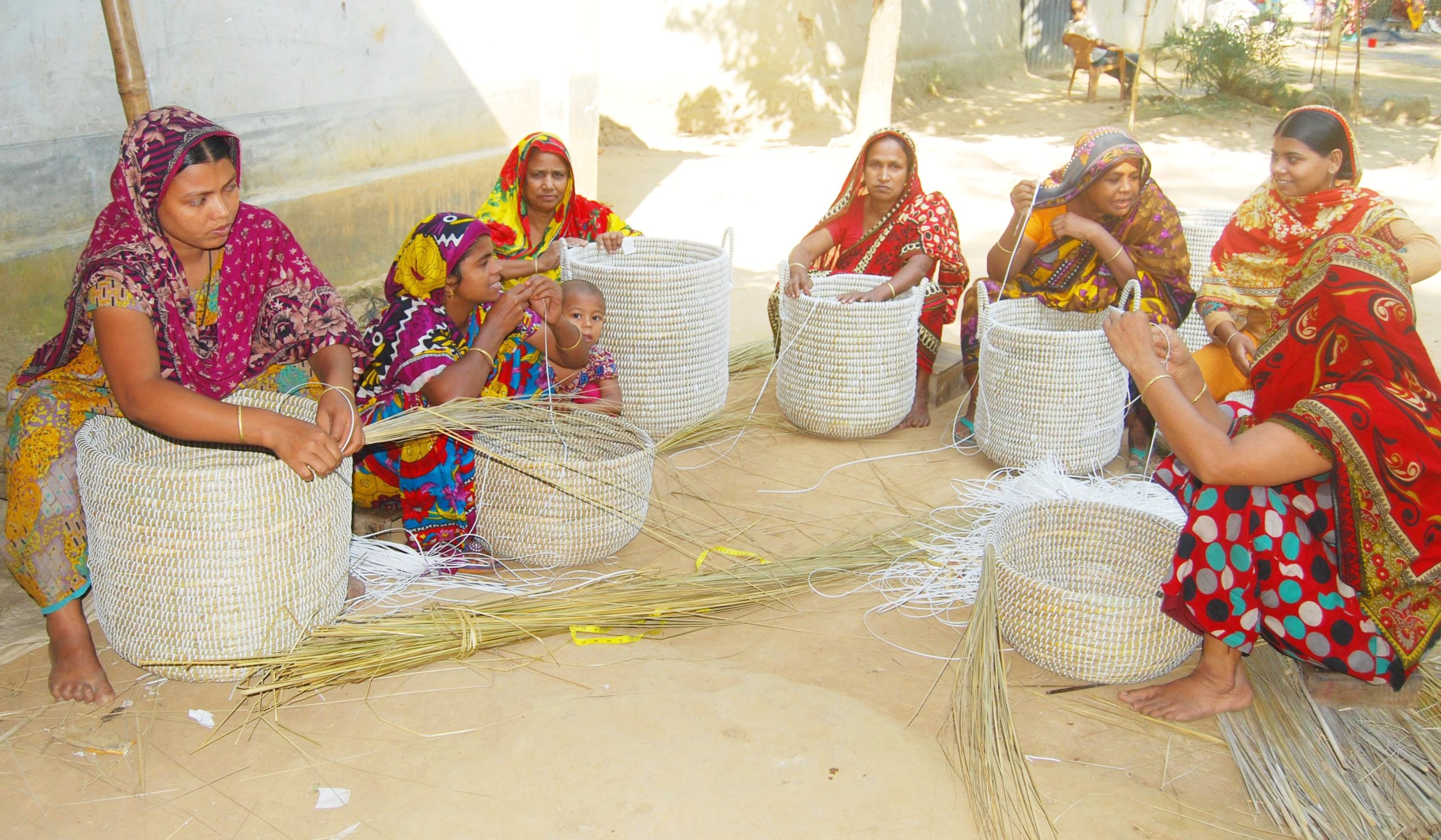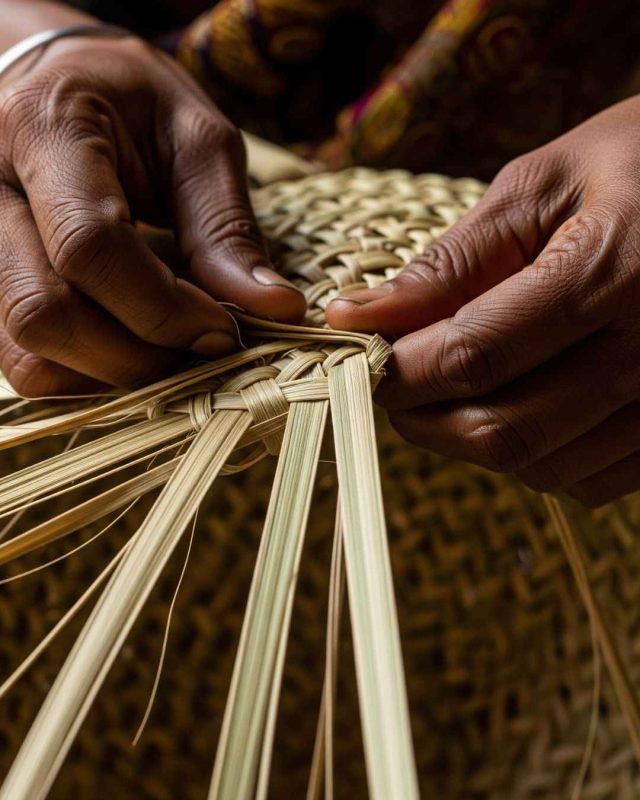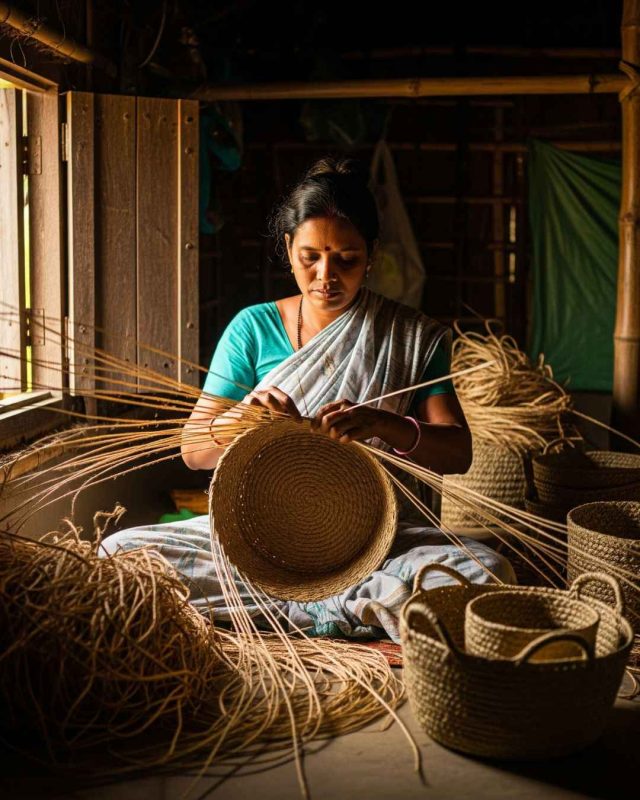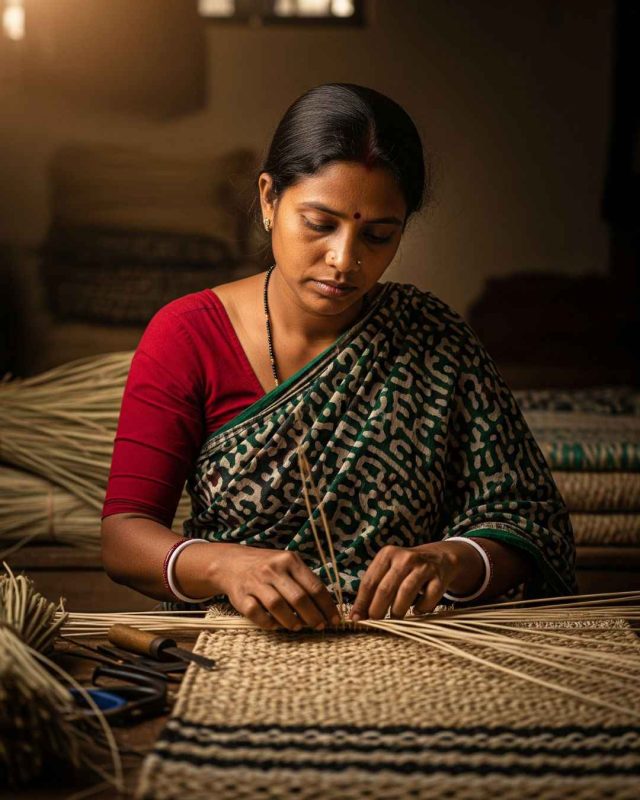The Role of Women in the Handicraft Industry of Bangladesh

Bangladesh’s handicraft industry is deeply rooted in its history and culture. Among the many factors shaping this vibrant sector, women’s participation stands out as a powerful catalyst—not just economically, but socially and culturally. In this article, we’ll explore the diverse roles women play in the handicrafts industry, their journeys toward empowerment, and how companies like Julhas Handicrafts are contributing to a sustainable and equitable future.
1. Women as Backbone of the Crafting Sector
In rural and semi-urban Bangladesh, the handicrafts industry often operates within informal small-scale settings or cottage industries. A vast majority of the artisans—especially in jute weaving, handloom, basketry, Nakshi Kantha embroidery, pottery, and cane carving—are women.

Key Insights:
- Rural Women Workers: Many women work from home or small workshops, using their craft skills to supplement household income.
- Economic Contribution: Though scattered across informal networks, women’s earnings in handicrafts significantly contribute to family expenses and spending decisions.
This prevailing involvement of women in the sector makes the handicrafts industry not only a reflection of tradition but also a vital economic engine for empowerment.
2. Economic Empowerment & Independence
a) Income Generation & Financial Autonomy
- Studies in Rangpur: Research shows that employment in handicrafts, coupled with regular working hours and fair income, significantly improve a woman’s ability to contribute economically to her household.
- Chars and Remote Areas: In sparsely populated chars and remote regions, women earning from handicraft work are more likely to make independent financial decisions and gain a voice within household dynamics.
b) Entrepreneurship and Small Business Leadership
- A study analyzing women entrepreneurs in handicraft enterprises found financial literacy, business training, and access to capital as critical factors influencing the level of women’s engagement.
- Women demonstrating such skills are increasingly leading small enterprises—producing, designing, and often handling direct sales or partnerships.
3. Social Empowerment & Challenges Overcome
Empowerment isn’t only about income—it’s about confidence, visibility, and social change.
- Local Identity: By carrying forward traditional skills, women preserve cultural heritage while gaining community respect.
- Flexible Work: The structuring of handicraft work allows women—especially housewives—to balance family responsibilities alongside income generation.
- Barriers Still Remain: Many women face challenges like limited training, market access, and financial constraints that hold back full enterprise engagement. Research emphasizes the need for institutional support and training programs.
4. National Recognition: Handicrafts & Women’s Empowerment
The Bangladesh government declared handicrafts as “Product of the Year 2024”, aiming to boost exports and recognize the critical role of women in this sector.
This move highlights:
- Handicrafts are a key income source for millions—many of whom are women.
- The potential for growth in export earnings and worldwide recognition of artisan skills.
- A push towards diversifying Bangladesh’s export portfolio, currently dominated by garment manufacturing.
5. Julhas Handicrafts: Driving Change with Purpose
Julhas Handicrafts, founded in 2021, is stepping forward as a model for ethical, eco-conscious craft production in Bangladesh. Here’s how their work supports women artisans:


a) Artisan Empowerment & Fair Practices
- Julhas Handicrafts is deeply committed to artisan empowerment, ensuring fair wages, safe working conditions, and participation in decision-making.
- They hold certifications like amfori BSCI and Sedex SMETA 4-pillar, which enforce standards for labor rights, health, and safety.
b) Materials & Skills — Nurturing Women’s Expertise
- The materials Julhas Handicrafts works with—like seagrass, jute, date leaf, palm fiber, and rattan—are traditional crafts often practiced by women at the household or community level. By sourcing these materials, Julhas Handicrafts ensures ongoing relevance and value for these skills.
c) Market Access & Growth Opportunities
- Julhas Handicrafts exports globally and maintains low minimum order quantities, providing women artisans access to international markets that are otherwise difficult for small producers to reach.
- As part of global trade fairs like Ambiente (Frankfurt), Julhas Handicrafts opens visibility for artisans’ work, helping women showcase their skills internationally.
d) Sustainability & Ethical Branding
- Julhas Handicrafts positions its products as eco-conscious and authentic, creating value-added branding that translates to better returns for producers—particularly women.
e) Supporting Rural & Remote Artisan Communities
- Julhas Handicrafts’s social mission includes contributing to environmental sustainability and rural livelihoods—many of which involve women balancing household duties with craft production.
Together, these efforts make Julhas Handicrafts not just a business, but a pathway for women artisans toward financial sustainability, dignity, and global recognition.
6. Looking Ahead: What’s Needed Next
To fully unleash the role of women in the handicrafts industry—and build upon efforts like those of Julhas Handicrafts—the following steps matter:
- More Institutional Training: Provide design, quality control, business and digital marketing training to women artisans.
- Financial Access: Micro-finance, low-interest loans, or grant programs can help women scale up from home-based craft to entrepreneurial ventures.
- Market Linkages: Platforms—online marketplaces, exhibition support, export facilitation—should be strengthened to connect women sellers with buyers.
- Policy Support: Consistent government support—beyond declarations—through subsidies, infrastructure, and legal frameworks is essential.
- Community Awareness: Social campaigns to recognize the role of women, reduce cultural barriers, and promote craftsmanship as a viable profession.
Conclusion
The handicraft industry in Bangladesh is not only an industry of beautiful products but one deeply shaped by the hands of countless women. From rural homes to artisan clusters, women wield traditional skills to secure economic stability, family welfare, and personal dignity. Though challenges persist, companies like Julhas Handicrafts exemplify how sustainable business models can uplift women—preserving heritage while building futures.
By recognizing, investing in, and celebrating women’s contributions, Bangladesh can continue evolving its handicrafts legacy into a globally admired, gender-inclusive, and economically empowering sector.

